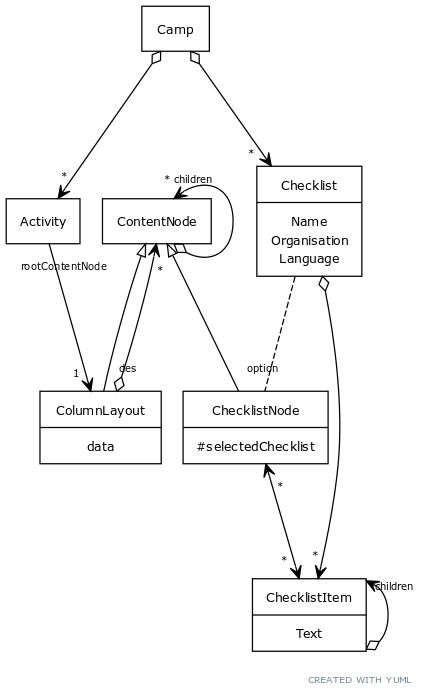| Variante 1 | Variante 2 | Variante 3 |
|---|---|---|
 |
 |
 |
>> Variante 3 <<
[ContentNode]
[ColumnLayout|data]
[ChecklistNode;#selectedChecklist]
[Checklist|Name;Organisation;Language]
[ChecklistItem|Text]
[ContentNode]^[ChecklistNode]
[ContentNode]^[ColumnLayout]
[Camp]<>-*>[Checklist]
[Checklist]<>-*>[ChecklistItem]
[ChecklistItem]<*children-<>[ChecklistItem]
[Camp]<>-*>[Activity]
[Activity]rootContentNode-1>[ColumnLayout]
[ContentNode]<* children-<>[ContentNode]
[ColumnLayout]<> des-*>[ContentNode]
[Checklist]-.-option[ChecklistNode]
[ChecklistNode]<*-*>[ChecklistItem]
Kursziele/Kursanforderungen
Strukturierte Anforderungen/Ziele/Kompetenzen von einer Instanz (Schule, Verband, Bundesamt & eigenen Erwartungen) welche man Aktivitäten zuordnen kann. Die Use Cases sind:
A) Administration
B) Activity Ebene
Category) hinzufügen.C) Reporting